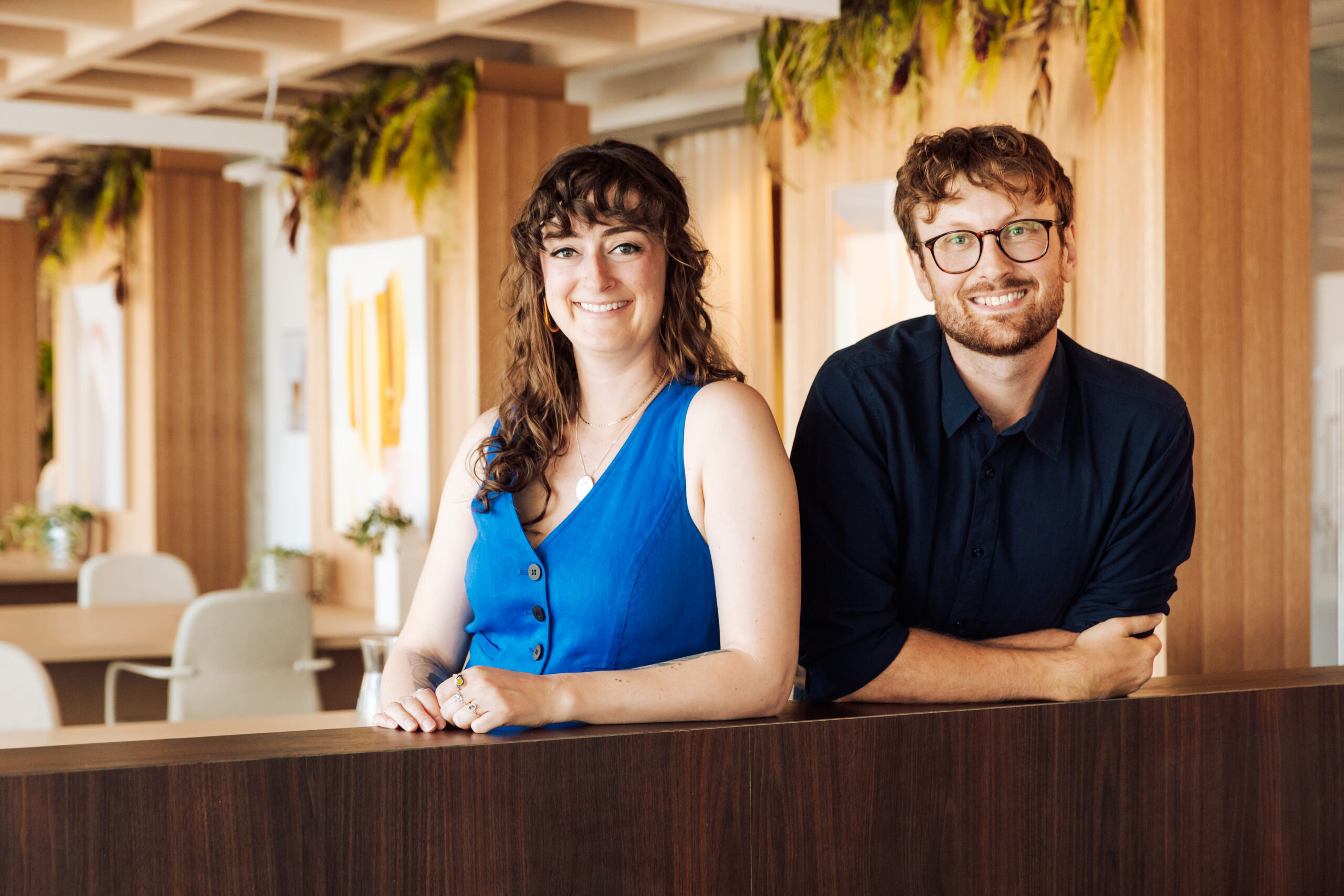
Dylan Reid and John Turello knew there had to be a better way. Exhausted by the unrealistic, unrelenting grind of working for large feature film companies (on hits such as Spiderman: Into the Spider-Verse and The Lego Movie), the professional animators decided to strike out on their own. The goal? The pursuit of excellence—but, refreshingly, not at all costs.
Superneat, their two-year-old animation studio, bucks the norm by refusing to underbid itself, instead only taking on clients who are willing to pay a fair price for great work—and at a reasonable pace, too. “We’re building a space where artists can thrive and have healthy work-life balance,” Reid says. “We’re artists first, and we’re trying to create a place that we would want to work at as artists ourselves. That’s the goal.”
With a focus on video game and commercial animation, Superneat, which has team members all over the world but is headquartered in Vancouver, is doing things its own way. Here, Reid shares more.
Let’s talk about how Superneat came to be.
There’s quite a culture in feature film animation of burnout with long hours and unrealistic demands, and we were over that. We didn’t want to work on these large teams anymore; these teams on feature films blow up to like 150 people, which is just in animation, and is quite a large department to collaborate with. We wanted to have a bit of work life-balance, and we wanted to keep working on cool projects.
We started Superneat two years ago, and we’ve built up a solid client base since then. We have a steady stream of work on game cinematics, gameplay, advertisements, and things like that for various clients around the world.
Who are some of the clients you’ve worked with so far?
One of our clients is a studio called Passion Pictures in the UK, which is quite well known for doing some really nice ad campaigns. One of the most famous things they’ve done is probably the Gorillaz music videos; they’ve been managing those for a long time.
Blizzard Entertainment is a game company in the US that we do quite a bit of work for, as well. And Supercell is a very big Finnish mobile game company that creates games like Clash of Clans and Brawl Stars.
You’re a remote company with employees all over the world. So what drew you to the Pavilion Residency?
We have been fully remote since we started, but I’ve really missed the collaborative environment you get from being in-person with people. That’s my favourite part about the job of supervising animation or directing animation, is actually being in-person with people, talking about something and collaborating and solving a problem. Pavilion gave us the opportunity to experiment with that again, and see how much it helped and how much it benefited the company. And I think it’s been a success. We still like the flexibility of working remotely and being able to stay at home when we need to, and we still have artists who are in the States, Australia, and Europe who obviously aren’t utilizing Pavilion—but for the contractors and artists who are here in Vancouver, they’re loving being able to have a space to come in and bond a bit more as a team.
What do you think a space like Pavilion offers a company like yours?
When you’re in a nice environment, or when you’re using nice tools, you feel more professional. It encourages you to create high-value, high-quality products. Just being in a place that takes itself as seriously as Pavilion does in terms of its attention to design and how much effort they put into the environment—it feels good to be in a space like that. It inspires you; it feels creative.
You mentioned that a big inspiration for creating Superneat was the burnout you were experiencing at a larger company. How do you, as a leader, navigate that now in a healthier way for you and your staff?
Part of that is just not under-bidding stuff, and really giving stuff enough time. We’re very careful about the work we take on. We want to take on work that pays well and has realistic deadlines.
What are your thoughts on AI as it relates to the animation industry?
We’re very pro-AI. We like it a lot. We think it’s going to be the future of animation, and we’re embracing it as much as we can. We have used generative AI in our work. It’s hard to adapt it right now for actual CG animation: that’s an application that hasn’t quite got there yet, but it will.
That’s a pretty rare outlook. I find my LinkedIn is just filled with people getting mad at other people for posting AI stuff. But in my opinion, it’s similar to the change from 2D to 3D. When Pixar released Toy Story in 1995, that was a big change from 2D animation to 3D animation; a lot of 2D animators refused to change, and then the 2D market shrunk considerably over the next 10 years, and then eventually just vanished. So we feel like that’s the same thing happening now with AI. OpenAI, the company behind ChatGPT, is funding an animated feature film using its tools. So it’s happening, it’s here to stay, and we’re excited about using it as much as we can.
This interview has been edited and condensed for clarity.

